Due to the popularity of birdwatching, and the way the hobby has (especially recently) transcended age groups and cultures, it has developed its own slang.
It can be quite confusing for people who have just started to enjoy birding, and they can get quite lost in a conversation with a group of more seasoned birdwatchers. Also, the terminology often seems to differ depending on which geographical area you are in.
I have tried to compile the most comprehensive list of birdwatching terms and birdwatching slang below. These examples of birdwatching terminology come from a host of international sources, my own social groups as well as my own personal experiences.
If you have any extra terms that you use in your “birders language” please add them in the comment section below.
Some recent updates to the site:
* Please join the brand new Birding Planet Facebook Group here. As soon as you join you receive a free bird ebook. And it is a wonderful way to connect birders from around the world.
* You can join the mailing list in the right sidebar for some discounts and other benefits.
* And you can see our brand new Birding Store here.
Birdwatching Terms and Birdwatching Slang
A
ASIAN FLU
A very contagious condition picked-up by some birdwatchers which is characterized by the tendency to see rare Asian vagrants where there really are none. A surge in the number of cases of Asian flu usually occurs shortly after a rare Asian bird has been reported.
B
BIG DAY
An event in which a birder or team of birders sets out to witness as many species as possible within a calendar day.
– I’m hoping to see at least 20 different species during this Big Day.
BIG YEAR
An event in which a birder sets out to witness as many species as possible within a defined area (county, state, ABA area) within a calendar year; originated with the American Birding Association.
– In 2016, ABA record holder John Weigel had quite the Big Year, setting the record with a species count of 835.
BINS
Abbreviation for binoculars.
– I’ve got my birding app, sun hat, water and my bins—let’s go do some birdwatching!
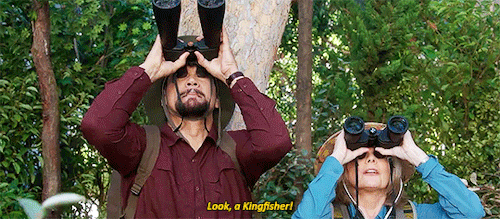
BIRDER
A person whose birdwatching status hovers somewhere between an obvious twitcher and an obvious dude. Birders are keen but not too obsessive, have well-honed bird identification skills, and are well acquainted with the local hot birding sites. Birders find the rarities for twitchers, and are generally happy to help dudes with the LBJs.
BOP
A bird of prey. Although many BOPs are big and impressive, they aren’t always readily identifiable, either because they are flying very high or the lighting conditions make all BOPs look like dark spots in the sky. As such, this generic acronym comes in quite handy – some days, many birds that are obviously raptors never get identified.
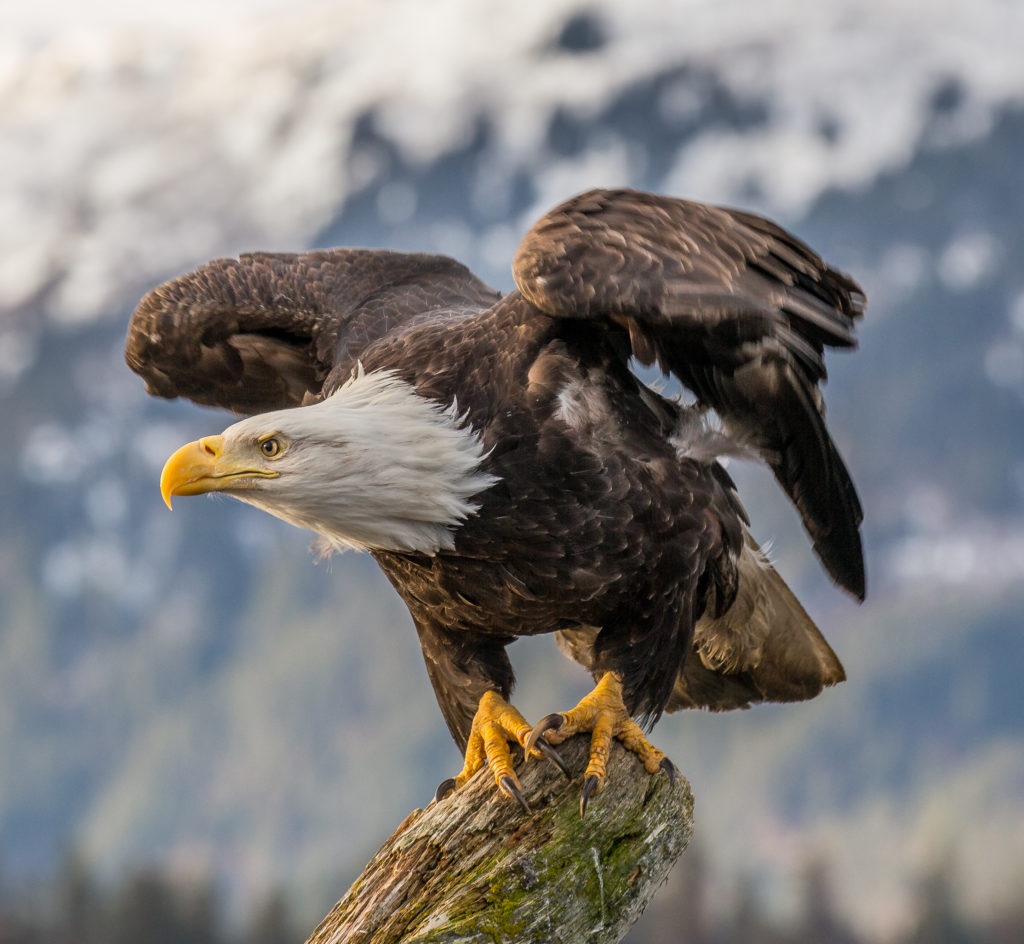
BUSHWACK (v)
To intensively search through dense brush for sparrows, warblers and other small, and often elusive, passerines.
C
CANS
Canvasback ducks.
CHASE (v)
To chase after a reported rarity. This does not mean chasing after the actual bird itself but undertaking a trip (usually a long trip) in order to see the bird and record it on a life-list, year list, etc.
CHICKMICE
A group of birds comprising of chickadees and titmice.
CULLS
Common, and usually unidentified, gulls.
CRIPPLER
A rare bird whose presence leaves you crippled—whether by its extreme rarity or sheer beauty—and unable to move on. Not all rare birds attain the status of cripplers, as some birds that are very rare are also small and rather plain.
– The Southwestern Willow Flycatcher was such a crippler I had a hard time thinking about any other birds during my time in Nevada.
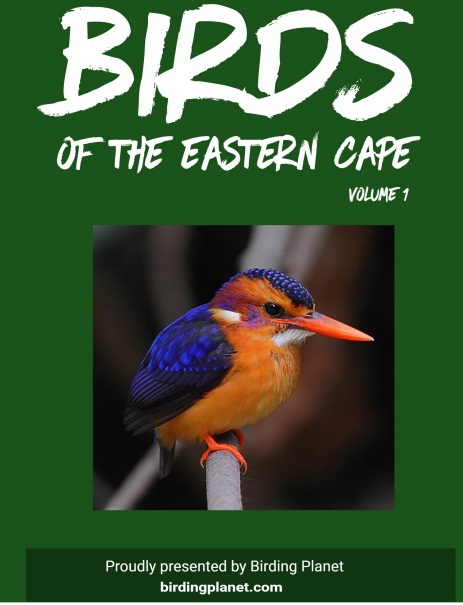
D
DIP / DIP OUT
To miss out on seeing a common bird, a bird you really wanted to see, or a rare bird everyone else saw but you missed.
– Every time I come to this spot, I dip on the Pied Kingfisher and go home frustrated!
DIGISCOPING
The technique of using a digital camera along with an optical telescope.
DUDE
Slightly disparaging term for a beginner birder or someone who seeks birds mainly for photography rather than study.
– This group is full of a bunch of dudes just trying to get a good Instagram pic.
Dudes prefer to go birdwatching in nice weather and easy to access areas. They are usually satisfied with the more common birds that would drive a twitcher insane with boredom. Dudes are generally not experts in bird identification but are quite happy just seeing the more common birds. The only danger with dudes is when they think they know far more than they do and consequently, run up lots of stringy records.
DARK LARK
European Starlings.
E
ELITIST
Any experienced birder who doesn’t believe what you saw.
EMPID
Flycatchers of the genus Empidonax.
F
FAKE
A domesticated bird or one of dubious origin, e.g., “Those are some fake ducks on that pond”.
FINK
Finches.
FLOG
To disturb shrubs and/or undergrowth in the hope of stirring a bird.
FLUFF-SPOTTED BUMTAIL (Submitted by Steve Woodhall)
Buff-Spotted Flufftail
FRUGIVOROUS
Fruit eating bird species.
FLYWAY
The route used by migratory birds between wintering and breeding regions.
G
GYPPOS
Egyptian Geese.
GISS (often spelled phonetically as j-i-z-z)
Generally accepted as originating from the WWII plane-identifying acronym GISS—General Impression Shape and Size—experienced birders can often identify birds by their overall impression of the general shape, movement, behavior, etc., of a species rather than any particular feature.
– I didn’t get a good look at it, but it definitely had the giss of a cuckoo.
GBH
Great Blue Herons.
GRIP SOMEONE OFF
If you dip out on a bird and another birder does not, then it is possible that the other person has gripped you off. This can happen simply because you arrived at the bird’s location after it flew off, you got lost or the weather turned bad. But it is also possible that the intense rivalry between twitchers may have had something to do with it. A twitcher may intentionally grip someone off by giving them the wrong travel directions, not sharing the sighting or even scaring the bird away before anyone else has seen it.
However, before accusing someone of “gripping you off”, be aware that knowledge of some rarities is suppressed in order to keep armies of twitchers away from private land or the breeding sites of vulnerable species.
GROWL
Great Horned Owls.
H
HAMMER
To get very high-quality photos of a bird. Also: crush.
– I hammered a ton of photos of some Oystercatchers at the beach this weekend!
I
IBA
Important birding area. A birdwatching area that is generally considered to be imperative for the protection of birdlife.
J
JINX BIRD
A relatively common and regularly occurring bird that has managed to elude a person’s life list despite repeated attempts on their part to find that species. One of the most common jinx birds is the Northern Saw-whet Owl.
JIZZ
The sum total of all the characteristics that make a bird species unique. The jizz includes their shape, color, voice, behaviors, etc.
JUNGLE FOWL
Chickens.
JUNKS
Juncos.
K
KACK
Thick, brushy habitat that is good for finding winter sparrows.
L
LBJ (Little Brown Job)
A classification for the small, drab songbirds that are difficult to distinguish. Many LBJ’s are sparrows, as the female or immature sparrows can be difficult to identify, even for the experts.
– I went looking for Herons, but all I came across were a ton of LBJs.
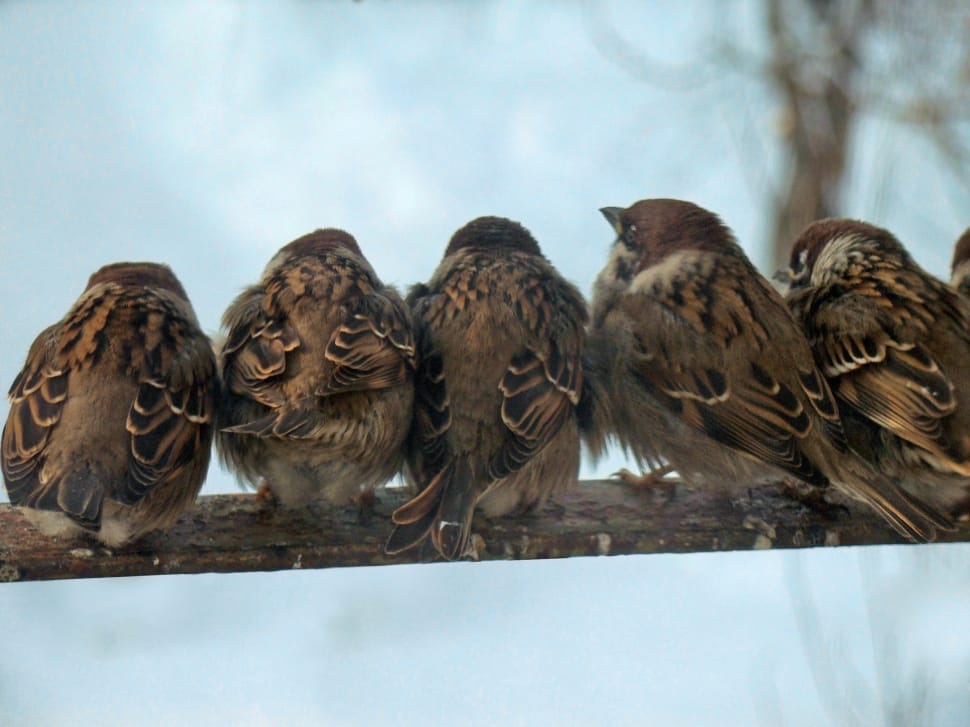
LIFER
The first-time sighting of a bird for an individual.
– The Black Skimmer I saw on my trip to Florida was an unexpected lifer.
LAWN CARP
Urbanized Canada Geese which frequent city parks, picnic areas and gold courses.
LEASTIES
Least Sandpipers.
LISTER
A person who obsesses about the size of their lifelist. This term is often used to describe a person’s level of birdwatching passion but it can also be used as a dismissive pejorative.

Birdwatching Terms continued…
M
MEGA
A very rare bird.
– I went to New Zealand in hopes of finding a mega like the Kakapo.
MEGATICK
An extremely good tick, by virtue of the bird being very rare and probably very colorful and/or exotic as well. A mega-tick is not only a good tick for you, but for any birder, even the most jaded of veterans.
– I couldn’t believe the megatick I got on my trip to New Zealand when I actually saw a Kakapo.
MEGA-FIND
A really good bird to find, and usually a very rare one.
MEGA-RARITY
A very rare bird.
MOO-TWEET
Cowbirds.
MOSTLY
Any bird species which commonly forms hybrids and which shows very few (or no) intermediate characters, for example, “that’s a mostly Western Gull”.
MUDPECKER
Shorebirds, usually those species which probe into the shoreline mud, i.e., dowitchers.
N
NATAL NEEDLE-NOSED DUCK (Submitted by Steve Woodhall)
Hadeda Ibis
NEMESIS BIRD
A particular species that constantly eludes an individual birder.
– No matter how hard I try, I can’t seem to catch a glimpse of a Yellow Billed Oxpecker—truly my nemesis bird!
NOTTABIRD
Something that looks like a bird from a distance but once binoculars or a spotting scope is used, turns out not to be a bird at all.
O
OYSTERTASTERS
Another (funny) name for Oystercatchers.
P
PATCH
A birding location (or set of locations) that a birder visits frequently.
– My friend from the forums happened to be in my hometown, so I took him to my local patch to give him a tour of our birds.
PASSERINE
A perching bird
PATAGONIA PICNIC TABLE EFFECT
The phenomenon that occurs when a rare bird causes several birders to flock to a site, resulting in more interesting species being spotted in that same area.
– After Adele posted a picture of a White Winged Flufftail at our local estuary, birders jumped at the chance, resulting in a Patagonia Picnic Table Effect and a rare Southern Banded Snake Eagle sighting.
PELAGIC
Relating to the open sea. In birding terms, it describes open-ocean species like the albatross.
– Always drawn to the sea, I organized a boat tour to seek out a few pelagic species to tick.
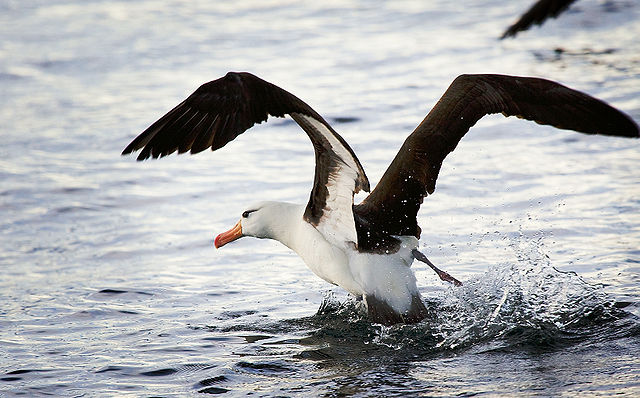
PATCH
A local area often frequented by birdwatchers.
PECK
Pectoral Sandpipers.
PEEPS
A term which refers to any of the small, almost identical-looking Calidris sandpipers.
PIBBLE
Pied-billed Grebes.
PIGS
Rock Pigeons.
PINE SWINE
Pine Siskins.
PISH (v)
A sibilant noise made with the lips for the purpose of attracting birds and having them come closer to you so they can be identified.
PISH OUT
To have birds respond to pishing. It can also refer to the fact that all of the birds have come to investigate the pishing sound and are no longer interested in responding to the sound.
POACH (v)
To look for birds in someone else’s territory during a Christmas Bird Count.
PROTOBIRDER
A new birdwatcher, and usually one who thinks they know more about birds and birding then they actually do.
PSEUDOBIRD
Something that looks like a bird, and perhaps even moves like a bird, until it is examined through binoculars or a spotting scope and found to be something completely different.
R
ROCKPECKER
Any shorebird which frequents rocky shorelines.
RUMPS
Yellow-rumped Warblers.
S
SIESTA TIME
The time of day, around midday, when birds are the least active.
– We hit traffic on the way to the park, and by the time we got there, it was siesta time and no birds were in sight.
SOB (n)
Acronym for “Spouse of Birder”; someone who is married to or involved with a birder but is not a birder themselves.
– Lindy is a supportive SOB, agreeing to watch the kids so her husband can chase a lifer.

Sp. / Spp.
Abbreviation for species—sp. (singular); spp. (plural)
SPARK BIRD
The particular species that sparks a lifelong passion for birding.
– I wasn’t sure if birding was for me, but then I saw my spark bird, a gorgeous Scissor-tailed Flycatcher, and I was hooked.
STRING
Intentionally misleading others about the presence of a bird.
– Jealous that he had dipped on the Purple Gallinule, Ross attempted to string us with a suspicious “sighting” of a Limpkin.
STRINGY
A reporting of a bird that draws skepticism.
– Ross claimed to have seen a Limpkin, but it seemed a bit stringy to me.
STRINGER
A person who frequently and intentionally misleads others about sightings (as opposed to well-intentioned mistakes due to lack of knowledge or experience).
– Don’t listen to Dylan, he’s a notorious stringer.
SCOPE (v)
The look over an area using a spotting scope.
SEAWATCHING
Sitting for long periods of time along a seashore in the hope that something interesting will eventually fly by.
SEMIS
Semi-palmated Plovers.
SHARPIE
Sharp-shinned Hawks.
SIBE
A bird which normally lives in Siberia (or nearby Asia) but crossed the north Pacific/Alaska region (usually as a result of a storm system) and wound up along the west coast.
SKY RAT
A term most often applied to Rock Pigeons (feral pigeons), but is also used for other, frowned-upon, introduced species such as European Starlings and House Sparrows.
SNAD
Sandpipers.
SNOG
Song Sparrows.
STINT FEVER
A malady in which sightings of rare shorebirds suddenly become more common than normal, usually in the period immediately following a report of a rare shorebird. See Asian Flu.
SUM PLUM
Summer plumage. Many species have different plumages which change on a seasonal basis, for example, waterfowl. The summer breeding plumage may be quite different from the non-breeding plumage.
T
TICK
A new bird added to an individual’s list—like ticking a bird off your list.
– On my trip to South Africa, I was finally able to tick the Buff-Spotted Flufftail.
TRASH BIRD
A bird that is so common to an area that it becomes annoying.
– I’ve not seen any bird I came to see, but there were plenty of trash birds just taunting me with their abundance.
TWITCH
To travel long distances to seek out a particular bird, often a rare bird. People who do this often are called twitchers.
– After retiring, Bob started to twitch for some of the rare species that had eluded him over the years.
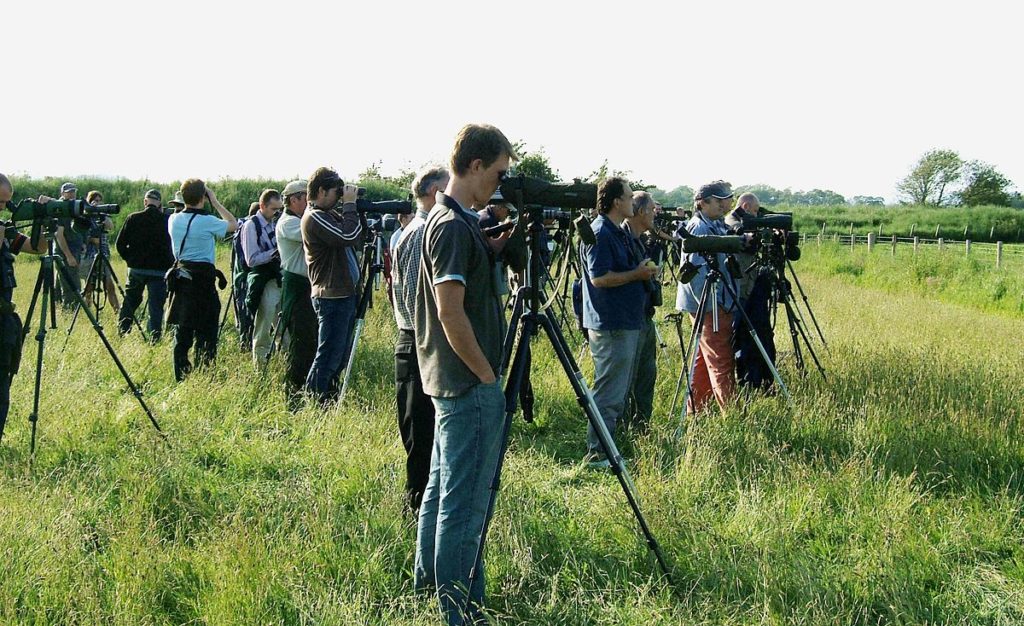
TAIL
Red-tailed Hawks.
TUBENOSE
Birds with tube-like nares (nostrils), e.g., albatrosses, shearwaters, storm-petrels.
TEEVEE
Turkey Vultures.
TWITCHER
A birdwatcher who is obsessed with list-keeping. Generally, a twitcher is obsessive of their life-list, going to great expense and effort to add new species to the list. They also tend to have several “important’ lists going at any one time, such as a year list and a country list. Twitchers invariably have huge lists that only impress other twitchers. Most surprisingly, they are not always good at identifying birds; some of them leave that work to other birders who have already located and identified the rare bird.
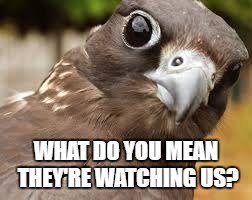
TWITCHER’S TWANG (Submitted by Vicky Ward)
Birder’s language
U
UGLY GULL
Any gull, regardless of whether it’s a pretty species or not, that presents an identification challenge.
USUAL SUSPECTS
Refers to the birds you would normally expect to see in an area each time you go there.
V
VAGRANT
A bird that has strayed a far distance from its normal ecological range.
– Everyone thought my Social Flycatcher sighting in Los Angeles was stringy, but the photo confirmed it was a vagrant.
VEEGEE
Violet-green Swallows.
VIS MIG
Visible migration. Being able to see a group of obviously migrating birds. The most common vis mig situation are ducks and geese.
W
WARBLER NECK
Similar to “Taco Neck,” warbler neck is a pain or crick in the neck caused by an extended time looking for birds high up in trees.
– I had a difficult time sleeping last night thanks to the warbler neck I got trying to find a Hermit Warbler—again.
WA-HAA
Cedar Waxwings.
WATERFOWL
Waterfowl is a general term for ducks, geese, grebes, loons, swans and sometimes cormorants.
WOODIE
Wood Duck.
X
X-BILL
A crossbill.
Y
YABOW
A non-birder who scares off all the birds from an area, either due to their carelessness or their hyperactive dog.
YBK (Submitted by Steve Woodhall)
Yellow-billed Kite
Z
ZONOS
Sparrows of the genus Zonotrichia, which are the crowned sparrows, i.e. White-crowned Sparrow.
Thank you to birding-world and everythingbirds for assistance in assembling this list.
Do you have any more birdwatching terms to add? Please let me know in the comments below. And please join the brand new Birding Planet Facebook Group here. It is a wonderful way to connect birders from around the world. If you enjoyed this post, or found it useful, please share it on social media and in your groups – there are sharing buttons at the top of the post and on the left side of the screen.
Birding Planet is on a Bird Conservation Mission and YOU can help! For as little as a $2 once off donation YOU can be a part of the community that helps prevent more bird species becoming extinct. I would like to make this site ad-free and only have conservation supporters displayed,
By raising funds through the wonderful Birding Planet community (that’s you and me) we can:
1) Raise awareness about birds in our communities and the plight they face
2) Contribute to the conservation and rehabilitation of birds (and their habitat), specifically endangered birds, in the following practical ways:
* Working with farmers to encourage non-lethal, non-harmful methods of preventing raptors from eating their livestock
* Creating HD videos of threatened/endangered birds for online sharing to raise more awareness
* Posting articles and videos on the Birding Planet blog and other social channels
* Adopting/sponsoring birds at sanctuaries and zoos
* Building aviaries for rehabilitation of injured or orphaned birds
* Supporting current wildlife specialists who specialize in bird care
* Purchasing land in towns and cities to create nature reserves and a safe haven for bird life.
How YOU can help to support the Birding Planet conservation initiative:
I am offering various gratitude and advertising opportunities for individuals, organizations and companies who would like to support the cause.
For the following donations you can get the following rewards/exposure: (all of these are once-off donations, no reoccurring fees.)
$2 – you will be thanked on Twitter to Birding Planet’s followers (over 1000 of them)
$3 – your name will appear as a supporter in the sidebar of the Birding Planet website for a week. (add $7 if you’d like to include a link)
$9 – you will be thanked on the Birding Planet Facebook page.
$10 – your name will appear as a supporter in the sidebar of the Birding Planet website for a month. (add $19 if you’d like to include a link)
$19 – you will be thanked on Instagram to Birding Planet’s followers (over 2100 of them). I will include a picture of you or your business/organization logo.
$29 – the bundle: you will be thanked on Twitter, Facebook, Instagram and the website sidebar for a month.
$85 – You get to be the proud sponsor of a Birding Planet high definition video. That means your name will appear on one of our published videos where it will always stay and you will forever be associated with the Bird Conservation cause. This video will appear in YouTube, the Birding Planet website and possibly other social channels.
$150 – you will have a full post published on the Birding Planet website. There we can share more about you or your business/organization. This will also include a link to your social media channel or website.
$1997 – You become the OFFICIAL SPONSOR of Birding Planet for a year.
Wherever Birding Planet is mentioned your, or your company’s, name will accompany it, such as the website banners and all Facebook pages.
All donations are made securely via PayPal, click the button below to donate. Add any notes to the payment e.g. which option you’ve taken and your details you’d like advertised. Alternatively please email me at info@birdingplanet.com (if you have any queries please feel free to email me as well) or use the contact form here.
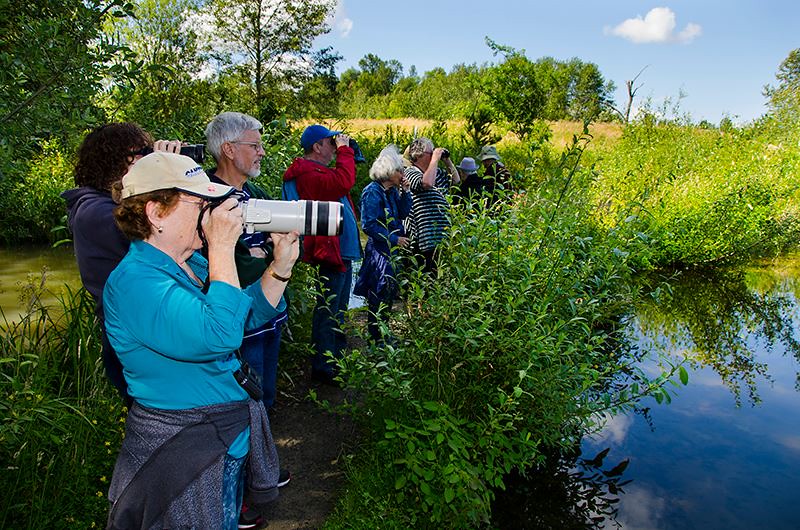



One I know of in South Africa is ‘CMF’, which stands for ‘Cosmic Mind F***’. Usually applies to elusive birds like Narina Trogons or Buff-spotted Flufftails showing out in the open and posing like porn stars.
Oh, and that bird is known by many local birders as ‘Fluff-spotted Bumtail’. Other Saffer birding terms are ‘YBK’ for ‘Yellow-billed Kite’, and (love this one) ‘Natal Needle-nosed Duck’ for the ubiquitous and noisy Hadeda Ibis.
You could increase interest by posting the origin of the name ‘Twitcher’, which I believe came from a Steller’s Eider, the Shetland Islands in winter, and a 600-mile ride on a 350cc Matchless single cylinder 1950’s British motorbike… read ‘A Tale of a Tribe’.
Great, thanks Steve. I’ll add those into the list.
Nice idea about the “twitcher” origin, I’ll definitely look into that.